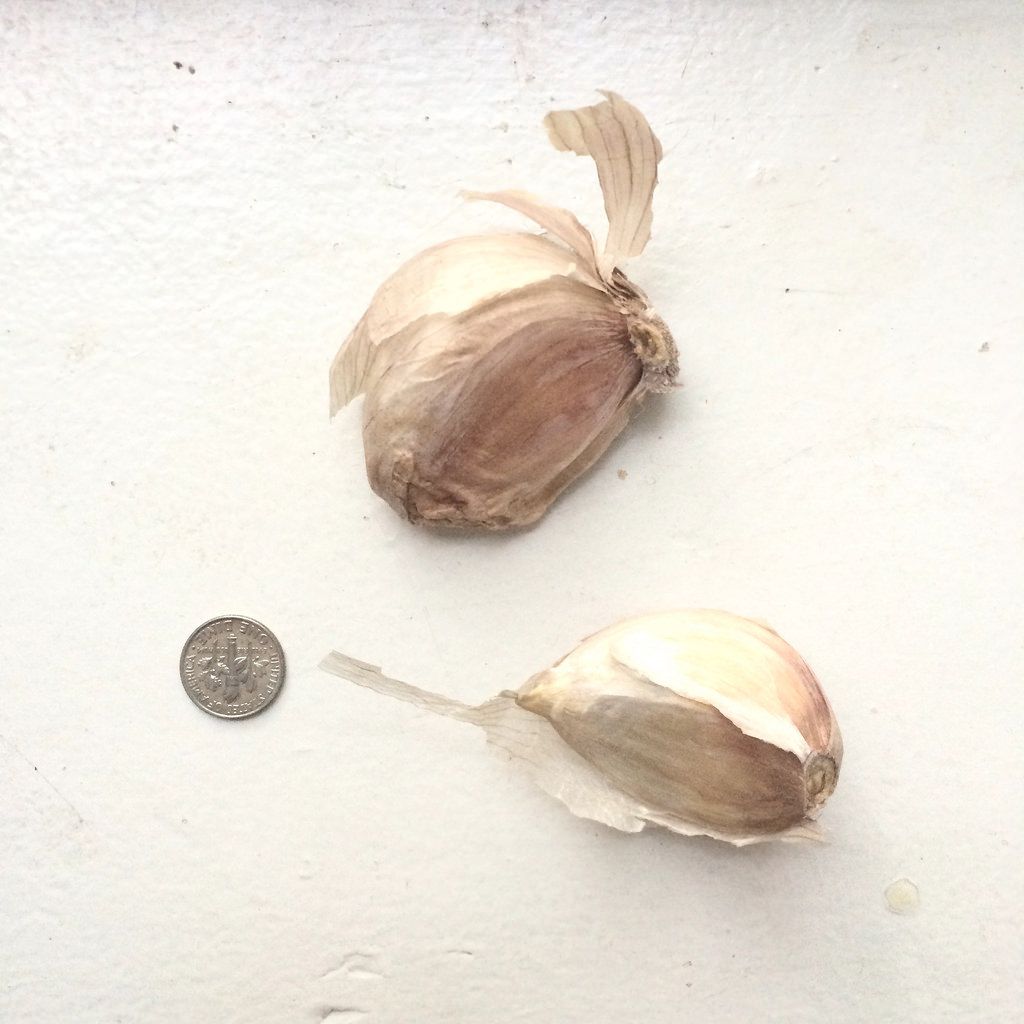Popular on Food52
12 Comments
Nonna
September 11, 2015
Google Filaree Farms to see 130 different varieties out of the hundreds (if not thousands) of garlic varieties from around the world. Your very large head of garlic may well be one of the Asiatic varieties.
Christine
September 7, 2015
I grow my own garlic and with a lot of strains, it's not unusual to have only 3-4 cloves in a (small) head. I grow mostly hardneck types and I find the taste is much stronger. I don't get so many annoying tiny cloves with the bitter green sprout on the inside.
pat
August 4, 2015
Have you noticed that the multiple garlic heads sold in a net are all from China? I had to search to find some grown in the USA where human waste is not used as fertilizer.
Barbara D.
August 4, 2015
I grow a stiff neck variety of garlic that is this big, we can't grow the soft neck one up this far north. usually there are 3-5 very large cloves. I choose the largest and best ones to plant for next year, garlic is planted in the fall like tulips, to get a bulb to harvest the following July
Paula O.
August 2, 2015
Yes, it's "elephant garlic". While the cloves are indeed quite large, they are generally a little milder than the regular garlic. I use it when I can find it...it isn't widely sold. An old friend used to grow it and shared it with me. There is nothing mysterious or genetically altered about it, it's simply another variety.
Tatyana
July 30, 2015
Maybe Romanian red variety: those have 2-6 large cloves. It's considered desirable by some since you don't have to peel a million tiny cloves.
Jack P.
July 30, 2015
By a very strange coincidence, I was tweeting about the same thing this very morning. I, like you, was told that it's a "hardneck" variety, one called "purple stripe." I thought it had an odd flavor, too, a hint of anise in there somewhere. I'm against this weird garlic!
Amanda S.
July 30, 2015
I didn't taste a different flavor—but there was a lot of butter and parsley in the mix, too!
Lyrajayne
July 30, 2015
There's not a biotech (or GMO, if you prefer) version of garlic outside of a limited number of field trials in New Zealand.
Molly C.
July 30, 2015
Those look like cloves of hardneck garlic, hence the stem in the middle and the well-separated cloves. Generally, larger bulbs are created by selecting seed garlic with large cloves. Hardneck garlic cloves are larger (proportionally) because they don't have the tiny inner cloves that softneck varieties have. I can't speak to your GMO question, but this would be my guess.
702551
July 30, 2015
When humans grow plants for food, there are typically dozens if not hundreds of cultivars, each with a unique combination of size, color, flavor, texture, growing season, pest resistance, etc.
This isn't specific to garlic, it is relevant to peaches, grapes, tomatoes, lettuces, strawberries, potatoes, whatever.
Commercial farmers have many choices about what they put in the ground. Often they will select multiple cultivars to expand the growing season, or different plants altogether to use their land in a most productive manner.
Most likely, you picked up a garlic bulb that was bred for those characteristics and which the farmer specifically picked to grow. After all, why would a farmer try to grow a cultivar that performs poorly in his/her area?
Concerning garlic, there are 500+ commercially active garlic cultivars around the world, and probably a few dozen are routinely grown here in the USA by commercial farmers. There are about ten major varieties of garlic in which the various cultivars fall into.
Again, this is typical of commercial agriculture: lots of varieties, lots of cultivars.
This isn't specific to garlic, it is relevant to peaches, grapes, tomatoes, lettuces, strawberries, potatoes, whatever.
Commercial farmers have many choices about what they put in the ground. Often they will select multiple cultivars to expand the growing season, or different plants altogether to use their land in a most productive manner.
Most likely, you picked up a garlic bulb that was bred for those characteristics and which the farmer specifically picked to grow. After all, why would a farmer try to grow a cultivar that performs poorly in his/her area?
Concerning garlic, there are 500+ commercially active garlic cultivars around the world, and probably a few dozen are routinely grown here in the USA by commercial farmers. There are about ten major varieties of garlic in which the various cultivars fall into.
Again, this is typical of commercial agriculture: lots of varieties, lots of cultivars.
 Monster garlic cloves, dime for scale.
Monster garlic cloves, dime for scale. 
See what other Food52 readers are saying.